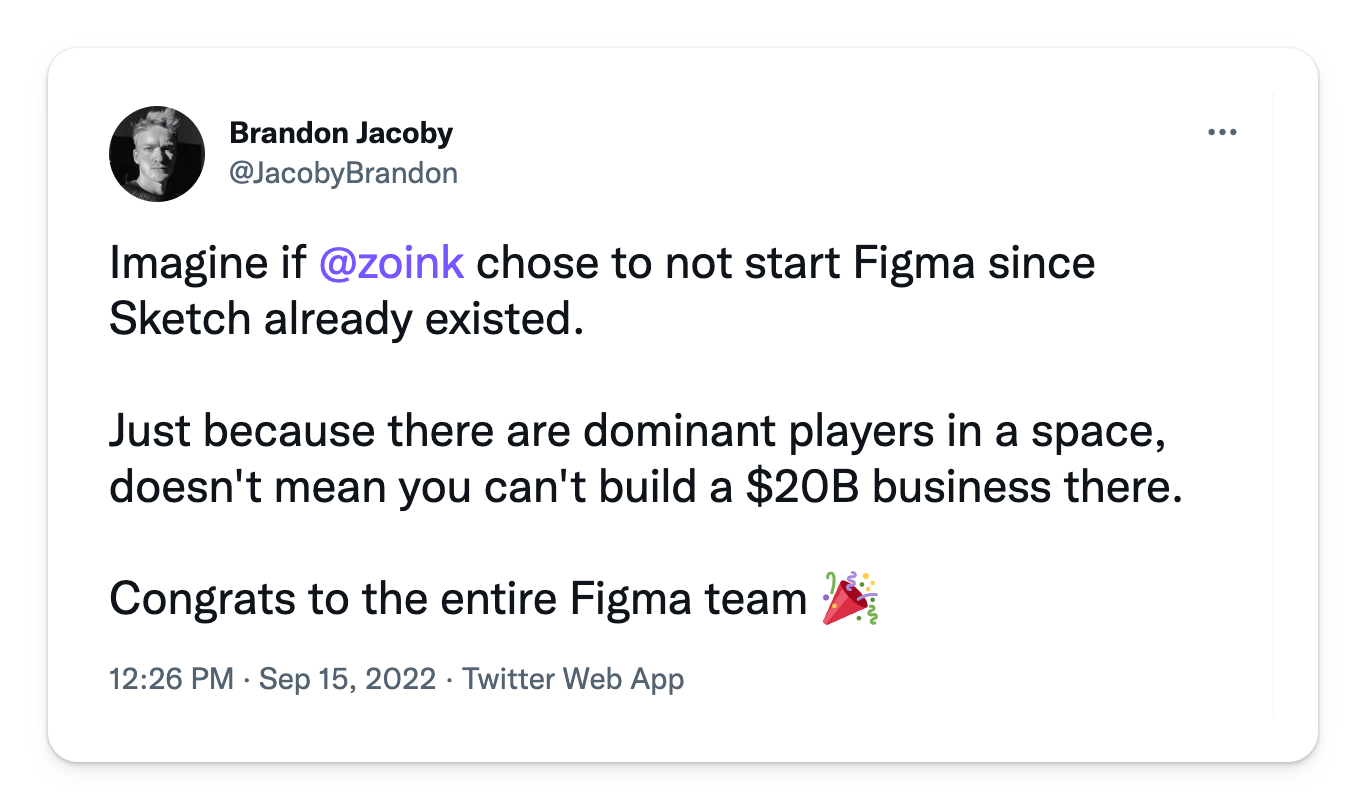Figma’s Bézier Curveball
If you’ve been living under a rock this week, I envy you. But you may be interested in learning that Adobe announced their intent to acquire the design tool Figma for $20 billion.
Many designers were understandably ruffled by news of the acquisition.
Figma became enmeshed in an entire community’s identity. It became synonymous with the very idea of design. It felt like “ours”, though of course it never was.
There are dozens of theories about why that’s the case, but the most likely is that Figma was built community-first, unentangled from the incumbents who over decades became abstracted away from their community. Figma was something pure, a blue ocean of independence and potential.
Figma was built as a citizen of the browser from its inception. With its prominent blue share button and live multiplayer, it embodied the decentralized culture of the Web. It was everything counter to Adobe’s aging proprietary file types, expensive subscriptions, and steep learning curve.
The design community was surprised. Not that Figma sold, but that they sold to the villain.
I’ve read all the popular criticism from the design community about the acquisition. But is there an optimistic frame on this surprising outcome for Figma? Here are three reasons why I’m enthusiastic about it.
1. The Economic Value Of Design Is Bigger Than We Knew
The Figma acquisition is the largest acquisition of a private tech company to date. $20 billion represents 50x Figma’s annual recurring revenue for 2022 — an astonishingly optimistic multiple even for a unicorn. Many argued that the acquisition was overvalued. I’ll leave the true value of Figma to the future to reveal, but the deal illuminates the massive economic value of design and the design community.
That’s really good news for designers, and businesses prioritizing design.
And for plugin creators, community file authors, and design educators, this is an invitation to double down, invest in the Figma ecosystem, and build businesses in its orbit.
I suspect Figma will become Facebook’s Instagram, or Google’s YouTube: an acquisition that will in retrospect seem obvious, and maybe even underpriced.

2. Figma Leads Us To Gold, Hidden In Plain Sight
The Figma acquisition reminded me of the Japanese design philosophy Super Normal.
Super Normal is the insight that many innovations around us are innovations of increments, not innovations of categories. The simple addition of a wooden casing to a metal bucket with a thin metal handle dramatically improves the design of the bucket. Electric cars look much like internal combustion engine cars, and solve all the same problems, but their drivetrains are evolved, with enormous benefit to humanity.
Figma is a Super Normal version of Illustrator. Yes, it’s another vector design tool. But a vector design tool built in the browser, with vast community input, and a restrained feature set.
An illuminating conversation with Simon Sarris reminded me that the opportunities for innovation of this type are abundant. For those with the ambition and will, Figma’s success proves there is still widespread opportunity to solve problems many assume have already been solved.
The Figma team are models of first-principles thinking and a commitment to excellence in every detail. An inspiration to us all. I have faith that they will carry this commitment with them to Adobe.

3. The New Benefactors of Creative Capital
Much of the $20B capital transfer in the acquisition (after VC investors are repaid) will make Figma’s founders and early employees staggeringly wealthy.
The result of this will almost undoubtedly be that some of this wealth turns into a Cambrian explosion of design tooling, tools for creative thought, and novel interfaces. If history is our guide, the Figma capital will spawn a generation of angel investors and founders with a new perspective on designing for delight.
For design entrepreneurs like myself, this is incredibly exciting. I think design tooling is just getting started, and I’m grateful that the “Figma Mafia” will be here to help shape it.
Design has finally gotten its seat at the table.